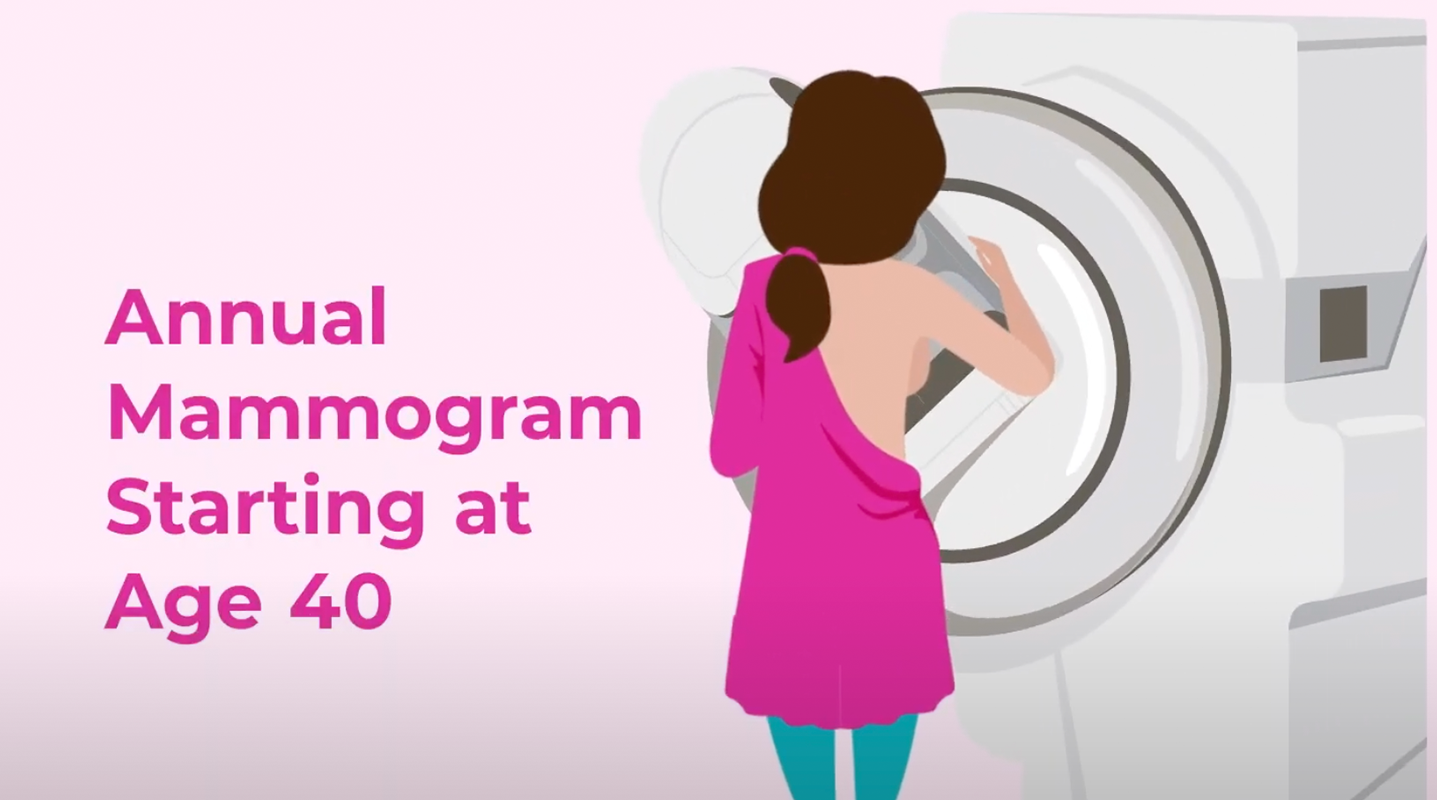Mammogram Myths and Misconceptions
October 25, 2021

An annual screening mammogram is recommended for women starting at age 40. But sometimes myths and misconceptions can get in the way. Let's clear the air by taking a look at five five myths and/or misconceptions about mammograms.
Myth 1: I'm not at risk because I don't have a family history of breast cancer.
Only 5% - 10% percent of breast cancers are inherited, so, every woman should be screened.
It's important to understand that some risk factors are things you're born with or cannot change, for example:
- Being born female
- Getting older
- Your race and ethnicity
- Being taller
- Having dense breast tissue
- Having certain non-cancer breast conditions
- Menstrual period starting at a young age
- Going through menopause after age 55
Myth 2: I don't need a mammogram every year.
Annual screenings spot changes faster. According to the American Cancer Society:
- Women 40 to 44: Start annual breast cancer screening with mammograms (x-rays of the breast).
- Women 45 to 54: Get mammograms every year.
- Women 55+: Mammograms every two years or continue yearly screening.
- Screening should continue as long as a woman is in good health and is expected to live 10 more years or longer.
Myth 3: A breast self-exam is good enough.
Mammograms find lumps two to three years before a woman or her physician can feel them.
Research studies have found there is little evidence that self-breast exams find breast cancer early. Breast self-exams are important for breast health because they can help you detect changes that may be signs of infection, however, they should not replace exams and screening tests.
Myth 4: I can't have a mammogram because I have breast implants.
Women with implants can have a mammogram. Extra pictures will be taken because it's harder to see some of the breast tissue.
Myth 5: It doesn't matter what type of mammogram I have, as long as I get one.
Quality of imaging matters especially if a woman has dense breast tissue. 3D mammograms or tomosynthesis, for example, allow radiologists to see multiple layers of the breast more clearly and a woman with dense breast tissue may need a breast ultrasound for additional imaging.
It's important to make time for breast health.
Early Detection Saves Lives
Schedule your screening mammogram onlineFor diagnostic mammograms or ultrasounds, call 855-530-2383.
Mammogram Myths and Misconceptions


